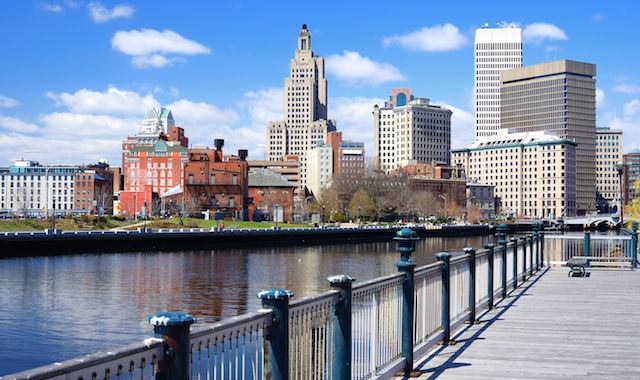Article
Worst places to practice in 2015
Did your state make the list?


Medscape recently ranked the worst states to practice medicine in 2015.
The site analyzed data on cost of living from the Missouri Economic Research and Information Center, malpractice payouts per capita from Diederich Healthcare, overall state and local tax burden from the Tax Foundation, and physician compensation from the 2015 Medscape Physician Compensation Survey.
Medscape also asked their readers for recommendations, talked to recruiters about practice conditions in each state, reviewed responses to the Physicians Foundation’s 2014 survey of more than 20,000 U.S. doctors, and interviewed practicing physicians.
After delving through the list, ophthalmologists and Ophthalmology Times Editorial Advisory Board members from each of the five states that Medscape said were the worst to practice gave their thoughts-and defended their beloved homes.



5. New York
New York is a really hard market for physicians to thrive in, according to Medscape. At $249,000, the average physician’s compensation is more than $22,000 below the national average.
Physician density in the metropolitan area is a drawback of note by the site. Of New York’s 62 counties, Manhattan, Brooklyn, Nassau, Suffolk, and Bronx counties had the highest increases in the number of physicians between 2004 and 2012.
Nevertheless, Norman B. Medow, MD, FACS, Ophthalmology Times Editorial Advisory Board member and editor of the "Our Ophthalmic Heritage" column, could not hold back his love for the Big Apple.
“There is no question that New York is an expensive place to live,” said Dr. Medow, director of pediatric ophthalmology at Manhattan Eye, Ear and Throat Hospital, and chairman of the Museum of Vision at The Foundation of the American Academy of Ophthalmology, NY. “But 'if you can make it here, you can make it anywhere.'
“Competition helps attract and keep some of the brightest practitioners in the United States,” he continued. “Lots of people would like to practice here, but either tried it or couldn’t make it . . . There’s no question some of the things (Medscape mentioned) are true, but those shouldn’t be looked upon negatively-completely negatively anyway.”



4. Rhode Island
Rhode Island physicians who responded to Medscape’s 2015 physician compensation survey reported lower pay than any other physicians in the country.
According to Medscape, at $217,000, average compensation is nearly 20% below the national average.
This does not play nicely into the state’s other economic factors, the site reported, as Rhode Island is among the 10 most expensive states in terms of cost of living and overall tax burden.
Paul Koch, MD, founder and medical director of Koch Eye Associates, Warwick, RI, shared his views of his state:
“Rhode Island is a quirky little state. It has 39 towns, each of which is its own little fiefdom, a tradition that dates back to the 1630s. The business climate is odd to outsiders who try to maneuver among the bureaucracies, but not so bad for locals who know their way around,” Dr. Koch explained. “With 39 town governments, school systems, and fire and police departments, there is redundancy which is expensive, and there are not a lot of people among whom to share the cost.
“That's why our cost of living is high, and why our net incomes are lower than most other states,” he continued. “But step onto a boat on a mooring off your backyard on a warm summer's night and you'll see immediately while wild horses can't drag us away.”



3. Maryland
High cost of living and too many physicians is what made Medscape put Maryland on this list.
“Although education and health services have been the strongest industry sector for the state, showing a 2.9% gain year over year in April, the state economy as a whole grew a lethargic 1.8% during the same period,” the site wrote.
Peter J. McDonnell, MD, chief medical editor of Ophthalmology Times, shared why he loves Maryland despite its economic challenges:
“My experience is that Maryland, with two thriving medical schools and the National Institutes of Health, is a remarkably vibrant environment for physicians, particularly those interested in teaching and research,” said Dr. McDonnell, also director of the Wilmer Eye Institute, Johns Hopkins University School of Medicine, Baltimore. “Consistent with this observation is that relatively few physicians leave the area.
“Maryland overall is economically strong, with an unemployment rate that typically is lower than that in the rest of the nation,” he continued. “Lastly, being located on the coast and blessed with the beautiful Chesapeake Bay, the state offers a high quality of life for physicians in their free time. I have practiced in only two states during my career, one on the East Coast and one on the West Coast, so my experience may be somewhat limited, but it surprises me that this publication would put Maryland low on its list.”



2. Massachusetts
While Massachusetts is the home of world-class health-care institutes, Medscape reported that its readers paid more attention to the commonwealth's economic pitfalls.
Massachusetts is also home to high taxes, a high cost of living, extraordinarily high housing costs, and the average physician compensation is $23,000 below the national average, the site wrote.
The Physician Foundation survey noted Massachusetts physicians as the third most likely to say they are working at capacity or feel overextended.
Despite these findings, Ernest W. Kornmehl, MD, Ophthalmology Times Editorial Advisory Board member and editor for the "Anterior Segment Techniques" column, expressed nothing but positivity for his home.
“Boston is a beautiful city and a wonderful place to practice medicine,” said Dr. Kornmehl, also medical director of Kornmehl Laser Eye associates, Brookline, MA. “A collegial relationship exists between ophthalmic and medical colleagues with a plethora of academic activity. Research opportunities are numerous. Managed care is increasing, however, there is no shortage of patients who require excellent care.
“I am protected from reduced reimbursement since the majority of my practice is fee based with many patients coming from abroad and out of state,” he added.



1. Connecticut
Connecticut falls into the same pitfall as the other states on this list-its cost of living is too high and physicians do not make as much money.
According to Medscape, the cost of living in Connecticut is more than 45% higher than the U.S. average, and the cost of housing is more than two times the national average.
The Physician Foundation survey reported that Connecticut physicians had the lowest morale of any of the Northeastern states.
Matthew Paul, MD, president of Danbury Eye Physicians and Surgeons, CT, expressed mixed feelings about these results:
“Connecticut has made practicing medicine a bit like surfing. You need to catch the wave of the state's regulations and restrictions just right or you miss the wave that will bring you home safely and stay stagnant as you await hopefully another opportunity. Or worse yet, you overly anticipate a change or impending law and get ahead of the wave and wipeout.
We were quick in Connecticut to adopt the regressive idea of a Certificate of Need. In our state you need this certificate to do anything of note and it has slowed competition and fostered higher prices.
We (also) have the policy in Connecticut where if you accept Medicaid and a patient has Medicaid and Medicare, then you can collect only the amount from Medicare and nothing from Medicaid, thus penalizing doctors for participating.
Connecticut jumped on the bandwagon to have doctors required to take specialty coursework on issues like infectious disease and cultural competency. Such mandates, while planned with the best of intentions, do not anticipate what is best for an individual physician. Take the infectious disease requirement that states such required CME for licensure renewal, must include HIV information. Yet, this year it would have been more important to learn more about Ebola.
Connecticut has a high cost of living and constantly is find new taxes for us to pay whether they are personal property taxes, business registration taxes or exorbitant gas taxes. Payments only minimally take this into account the effect of all these costs for practicing in our state. As a concerned employer of over 100 people, I am concerned with attracting, rewarding and keeping good people with us. It is hard for us to compete with local employers, which include multinational companies and insurance headquarters.
But, I love Connecticut. The people are decent, most kind and many grateful. Our close proximity to New York City makes it attractive for hiring new doctors. We are blessed with having truly four seasons and luxury of lots of green spaces to catch your breath.”
Did you see these?
Best ophthalmic hospitals in the U.S.
Top 10 ophthalmic advancements over past 20 years

Newsletter
Don’t miss out—get Ophthalmology Times updates on the latest clinical advancements and expert interviews, straight to your inbox.




